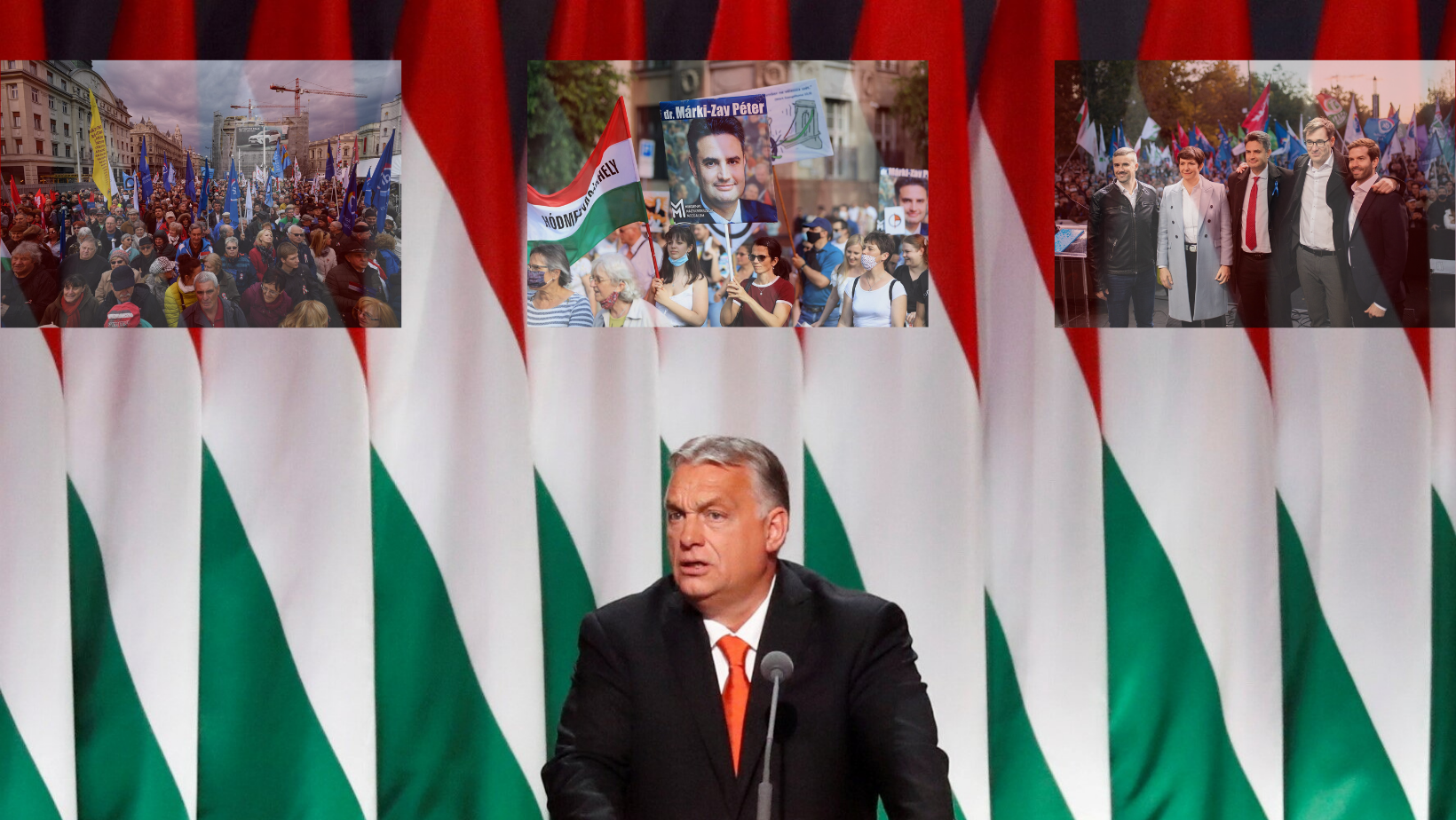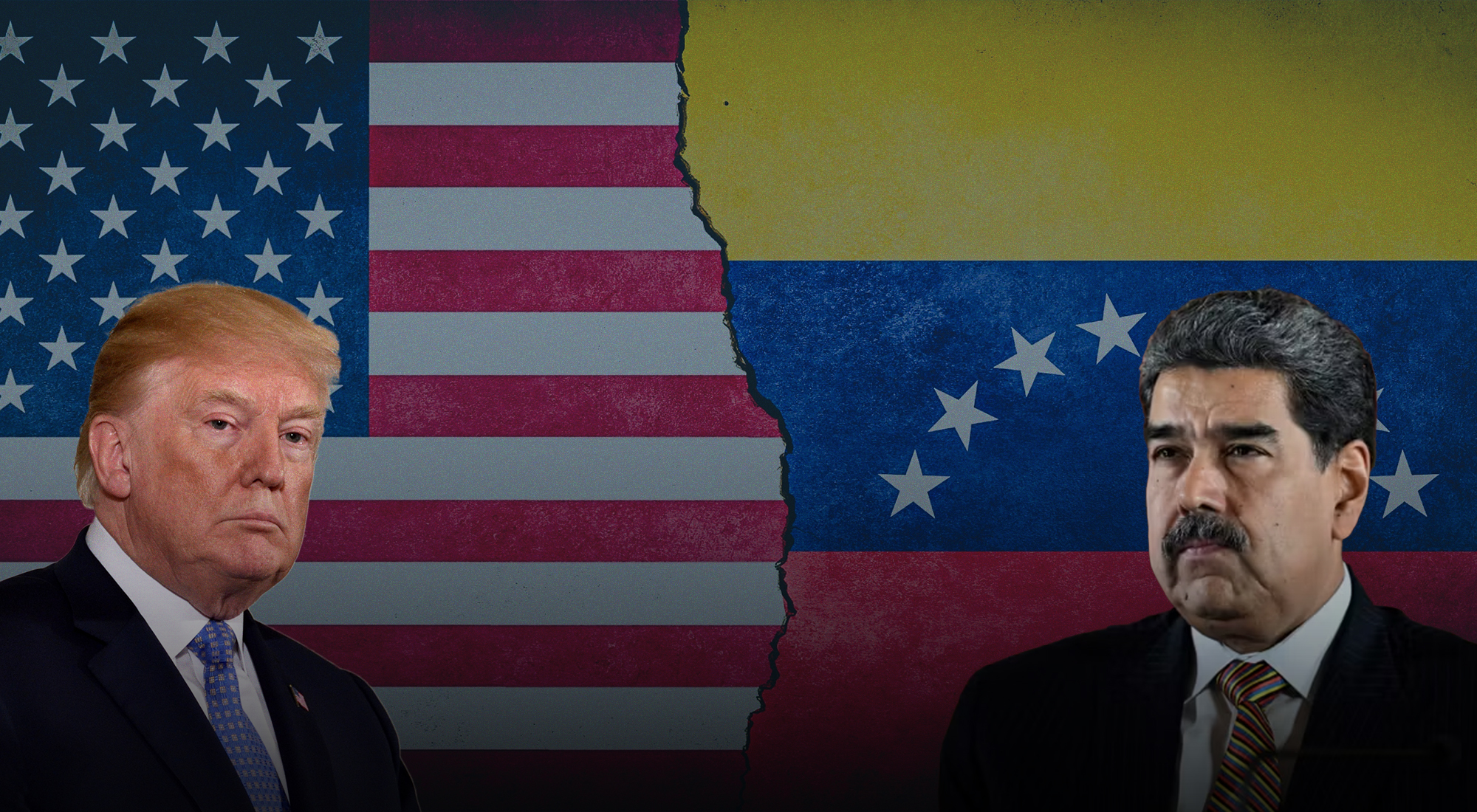When the Fidesz party won a two-thirds majority in the Hungarian parliament on 3 April 2022, it marked leader Viktor Orbán’s third consecutive re-election and fourth term as Prime Minister. Orbán’s victory came despite growing dissatisfaction in the government’s handling of Covid-19 and emerging social crises facing Hungarian society. Polls predicted the election would be closer,[1] yet opposition parties were unable to move beyond their fault lines and create a programme that resonated with the electorate.
Orbán has built his political juggernaut through questionable tactics. During the 2015 refugee crisis and the Covid-19 pandemic, the Hungarian government declared emergency powers, in effect, creating an even more serious political crisis out of the existing crisis. Through these exceptional orders Orbán has consolidated his power, moving Fidesz from its orgins as a centre-left movement that opposed Hungary’s ruling Marxist–Leninist government to a centre-right nationalist party.
One of the contradictions of Hungary’s politics is that the most vulnerable social groups have voted for Orbán, whose government policies favour the middle and upper classes. The rise of nationalist-populism is linked to the crisis of liberal democracy and questions about whether the European Union is benefiting all of its member states.
Crisis of liberal democracy and transformation of Hungary’s party system
After the collapse of the Soviet Union, Hungary became a democratic parliamentary republic on 23 October 1989. During the ensuing decade in Central and Eastern Europe (CEE), there was a strong consensus among the post-Communist elite that liberal democracy and liberal democratic institutional systems were the best way to proceed. This “neoliberalism” included “deregulation, liberalization of trade and capital flows, anti-inflationary stabilization, and privatization of state enterprises”[2] Liberal democracy became the dominant political-legal framework in the region, which also meant that the elite was anti-populist, and remained mostly uncritical toward global and local inequalities caused by the neoliberal hegemony, both at home and in the EU.
The Fidesz party won its first seats in the National Assembly in the 1990 elections and was initially liberal and a member of the political group that helped establish the parliamentary system of 1989. In the 1994 election, Fidesz lost two seats and changed its platform to be more conservative. Some members switched to the Alliance of Free Democrats, but Orbán was able to forge his own alliances with other conservative parties, which allowed him to form his first government in 1998. Orbán’s first term as Prime Minister was marked by corruption scandals, and though he added nationalism to Fidesz’s platform, the party lost to social liberals in 2002 and 2006.
During its years in opposition, Fidesz became increasingly critical of liberal democracy and the neoliberal agenda, arguing that these systems were not able to compensate the losers of the transition from communism. In particular, capitalism resulted in the politics of austerity, which was the main directive of international organizations such as the International Monetary Fund, World Bank, and EU. The resulting cutbacks in spending caused several social crises in Hungary, and, according to Béla Greskovits of Central European University in Vienna, Eastern Europe reached “the end of patience.”[3] In the decade following the fall of communism Eastern Europeans refrained from protesting violently while slowly shifting to a parallel, informal economy. They relied on their employers’ capacity to enforce protective state intervention. But, eventually, argues David Ost of Hobart and William Smith Colleges, the situation boiled over, resulting in a strengthening of the latent base of the subsequent populist turn.[4] The “wrathful people” in CEE countries slowly turned to protest voting and channelled their demands through democratic institutions, abjuring other tactics. “The second decade of transition saw the emergence of a new wave of radical populists who benefited from the ‘transition fatigue’ of the electorate and their disenchantment with mainstream parties,” argues Ben Stanley of Warsaw’s SWPS University of Social Sciences.[5]
Failing in the fundamentals: How the left lost
The leading force of the left-liberal side, the Hungarian Socialist Party (known as the Magyar Szocialista Párt or MSZP), suffered enormous political losses in the last decades. The collapse of the left-liberal governments of 2002-2010 led to Fidesz’s landslide victory in 2010, which led to Orbán’s emerging autocracy. The crisis of the left, however, dates back earlier. After the collapse of the Soviet Union, the Hungarian left was not able to distinguish itself from the liberals, and this failure drastically weakened its traditional social and political ties to the working class. MSZP subordinated itself to the implementation of austerity measures instead of standing up for social emancipation and fighting against social inequalities — the centuries-old message of socialism.
The Hungarian Green Party, known as Lehet Más a Politika (Politics Can Be different) or LMP, was founded in 2009, as an alternative to the MSZP. In the 2010 elections, the LMP won 16 seats, including the one held by Gábor Scheiring, a Hungarian economist, who served as a member of the National Assembly until 2014. Scheiring, who is currently a Marie Curie Fellow at Milan’s Bocconi University, won the BASEES 2021 Book Award for The Retreat of Liberal Democracy, which looks at how the alienation of Hungary’s proletariat has enabled Orbán’s illiberalism. “The socialists suffered the most significant setback as a result of the austerity measures introduced after their electoral victory in 2006; the party’s popularity rating plummeted from 37% to 26%,” Scheiring writes. “The elitist communication in connection with the austerity measures — ‘Don’t be scared, it won’t hurt!’ — further exacerbated the massive defection from the party. The last neoliberal push towards healthcare reforms, such as the partial privatisation of health insurance, the closing down of hospitals, and the introduction of co-payment, were also profoundly unpopular measures.”[6]
Instead of representing salaried employees, wage earners, pensioners, and the youth, the traditional left politicians sided with the liberal elite. Not only did this alienate workers and the middle-class, but many of these voters gradually became open to the far right.
The pandemic: A tragic health crisis and a missed opportunity
The outbreak of Covid-19 and its handling by the Orbán government has made Hungarian society more insecure than ever and has plunged it into financial and mental-health crises. The Hungarian people regard the quality of healthcare, low wages, and excessively high living expenses as the biggest challenges facing the country, according to a 2020 study.[7] The Budapest-based Policy Solutions writes: “The depth of the social crisis caused by the coronavirus is well indicated by the problem map of Hungarians, as concerns about living expenses grew the most out of those listed… socio-economic issues showed a stronger dominance than before as similar topics are in fourth and fifth place: growing social inequalities (37%) as well as the issue of low pensions (22%).”
The fallout from the pandemic provided an opportunity for Orbán’s opposition if they could reorganize around these social issues and capitalize on the anger over the government’s inhumane crisis management. The Orbán administration’s use of exceptional legal order did not necessarily protect society from Covid-19 — Hungarian citizens died at the fourth-highest per capita-rate in the world[8] — but did seem to benefit the government politically.
The Hungarian opposition, a coalition of left wing, liberal, and moderate conservatives, failed to seize this opportunity. Unlike the three previous elections, they adopted a strategy of full cooperation (see Table 1, Opposition Strategy 4), but could not prevent Fidesz from winning a majority, and, in fact, received fewer votes than 2010, 2014, and 2018. The MSZP was in government heading into the 2010 election, but the party was in disarray as Prime Minister Gordon Bajnai had only taken over from Ferenc Gyurcsány, who resigned in April 2009. As a result, opposition to Orbán after the landslide victory of the Fidesz-KDNP in 2010 was fragmented (Opposition Strategy 1).[9] In 2014, there was partial cooperation to resist Fidesz (Opposition Strategy 2), and in 2018 Orbán’s competition coordinated their efforts (Opposition Strategy 3).
Orbán seemed particularly vulnerable in this election. Fidesz had no written programme for the election, and the party’s major policy announcements were an increase in the minimum wage and accompanying tax cuts for small businesses.[10] Orbán’s main message was that he and his government could defend the Hungarian people against the refugee crisis, the pandemic, and Russian aggression, which became an issue upon Vladimir Putin’s invasion of Ukraine in February. Despite seemingly united opposition, however, rival parties were weakened by fault lines and internal disputes. “It was high time that the opposition parties declared their intention to join forces, as this was actually long expected by the voting public,” Policy Solutions continues. “This decision of the six parties is widely considered an important and reassuring message to those voters who are dissatisfied with the current regime. Critics had continuously warned that a united opposition could not work because many voters would not cross-party lines to support the candidates of more controversial formations.”[11]
The unified opposition was undoubtedly the most important political innovation of recent years among the Hungarian opposition parties, but the danger was that if the coalition failed to develop a common programme that reflected a shared vision they would not be viewed as a viable governance alternative. The main fracture within the opposition came when liberal and right-wing members, DK, Jobbik, and Momentum, did not accept policies such as progressive taxation, raising the level of public services, and fighting exploitation, which the left-wing, MSZP and Párbeszéd, believed were necessary to address social problems created by Fidesz. Orbán exploited this division, and the coalition was unable to act as an allied political force.
Table 1: Distribution of government and opposition votes by election and opposition strategy

Governing by the permanent state of exception: Migration and pandemic crisis
Extraordinary legal orders have become, well, ordinary, in Hungary. Orbán first declared such an emergency measure in response to the 2015 refugee crisis (see Table 2, Column A), an order that has been renewed nine times and remains in place today (the latest extraordinary legal order regarding refugees expires in September 2022).[22] Hungary, also implemented emergency orders for Covid-19 in March 2020 after the World Health Organization classified it as a pandemic. That order has also been renewed for the three main waves of the virus (Columns B and C), and was only suspended on 1 June 2022, 52 days after the election. Finally, in response to Russian aggression in Ukraine, Orbán introduced Decree no. 180/2022, his 10th amendment of Fundamental Law, declaring a state of emergency if an armed conflict is taking place in a neighbouring country (D).
A country in a constant state of emergency does not tend to function properly, and many of the social crises in Hungary are exacerbated by the anxiety brought on by the interruption of normal life. There are serious questions about the necessity of such orders, their legality, and suspicions that they are a ploy by Orbán to consolidate his power and wrong-foot his opponents. They may even be considered an abuse of law, however, with a two-thirds constitutional majority, the Fidesz government can amend the constitution in practically any way it wants.
There might be merit behind the decrees regarding Covid-19 and Russian aggression. Hungary was hardly the only country to declare the deadly pandemic an emergency, and citing the war in Ukraine as justification for an extraordinary judicial order could also be defended, considering the fighting is taking place near Hungary’s border. The problem is that there are so many orders all stacked on top of each other that have been in place for so long that the electorate has started to forget how the state is meant to operate. The first extraordinary judicial order set the stage for the others that followed. In response to the 2015 European migrant crisis, also known internationally as the Syrian refugee crisis, Orbán decreed that Hungary would not take in its share of the 1.3 million displaced people who were requesting asylum in Europe. He often criticized German Chancellor Angela Merkel for allowing the migrants into her country in the first place, and used xenophobic language to describe the asylum seekers. “If you take masses of non-registered immigrants from the Middle East,” Orbán told Bild magazine in 2016. “You are importing terrorism, crime, anti-Semitism, and homophobia.”[23]
Table 2: The structure of overlapping state of emergency (2015-2022)

Conclusions: Opportunities for the future
Although Hungary is by law a democratic republic, under Orbán it has devolved into “a form of competitive authoritarianism.” The country still holds elections, but they are held under constant emergency decrees and the Prime Minister doesn’t run on policy prescriptions as much as culture-war sloganeering.[24]
After the devastating failure of 2022, the main challenge for the Hungarian opposition is how to make “enhanced cooperation” work against this emerging authoritarianism. This means parties with opposing policy ideas come together with an agenda focused on appealing to those voters left behind by the Orbán regime. The issue of climate emergency, for example, has never been fully emphasized by parties other than LMP. Orbán could be vulnerable on the environment as he has embraced globalized capitalism, which is the main cause of anthropogenic climate change. The climate emergency is predicted to have many deleterious effects, including lack of food security and displacement of people causing increased migration.
In this alternative agenda, breaking out from authoritarian exceptionalism is essential. The socio-economic issues in the country that started to develop before Covid-19 have been exacerbated by the pandemic. The key for the opposition is to show that the Orbán regime cannot be replaced without a socio-political turnaround to help the worst-off social groups, who are the real victims of the Orbán regime. If the opposition is able to formulate its own policies in these areas, it can be successful not only as part of the emerging anti-Orbán coalition, but also as an independent actor after 2022.
References[1] Poll of Polls, Politico (2022), https://www.politico.eu/europe-poll-of-polls/hungary/.
[2] Johanna Bockman, Markets in the Name of Socialism: The Left-Wing Origins of Neoliberalism (Stanford: Stanford University Press, 2011), p. 4.
[3] Béla Greskovits, The Political Economy of Protest and Patience: East European and Latin American Transformations (Budapest: Central European University Press, 1998).
[4] David Ost, The Defeat of Solidarity: Anger and Politics in Postcommunist Europe (Ithaca: Cornell University Press, 2006).
[5] Ben Stanley, “Populism in Central and Eastern Europe,” in Handbook of Populism, eds. Cristóbal Rovira Kaltwasser, Paul Taggart, Paulina Ochoa Espejo, and Pierre Ostiguy (Oxford: Oxford University Press, 2017), p.140–160.
[6] Gábor Scheiring, The Retreat of Liberal Democracy Authoritarian Capitalism and the Accumulative State in Hungary (Cham: Palgrave Macmillan, 2020).
[7] András Bíró-Nagy, Gergely Laki, Áron Szászi, “The Prospects of Green-Left Politics in Hungary,” in Policy Solutions (Budapest: Friedrich-Ebert-Stiftung, 2020), https://www.policysolutions.hu/userfiles/elemzes/316/fes_policy_solutions_green_left_politics_in_hungary_en_summary.pdf.
[8] “Coronavirus (COVID-19) Deaths Worldwide per One Million Population as of April 26, 2022, by Country,” Statista (2022), https://www.statista.com/statistics/1104709/coronavirus-deaths-worldwide-per-million-inhabitants/.
[9] By opposition strategy, I mean the opposition strategy after the Fidesz-KDNP victory with a two-thirds majority after 2010.
[10] Krisztina Than and Gergely Szakacs, “Hungary’s Orbán Sets Stage for 2022 Vote with Wage Hike, Tax Handout to Families,” Reuters, June 10, 2021, https://www.reuters.com/world/europe/hungarys-orban-sets-stage-2022-vote-with-wage-hike-tax-handout-families-2021-06-10/.
[11] András Bíró-Nagy, ed., “Hungarian Politics in 2020,” Policy Solutions (Budapest: Friedrich-Ebert-Stiftung, 2021), p. 26-27.
[12] The names of the Hungarian parties and alliances have been translated and explained in English in the footnotes.
[13] Populist and authoritarian governing party alliance of Hungary. Fidesz is the Alliance of Young Democrats, and KDNP is the Christian Democratic Party.
[14] MSZP is the Hungarian Socialist Party.
[15] Jobbik is a former far-right party, which has become a centrist conservative party.
[16] LMP is Politics Can Be Different, which is a green party.
[17] Együtt is Together, which is a former centrist-liberal party.
[18] DK is Democratic Coalition, which is a centrist-liberal party led by the former socialist prime minister Ferenc Gyurcsány.
[19] Párbeszéd is Dialogue, which is a green-left party established by the former members of LMP.
[20] Momentum is a new liberal party.
[21] Mi Hazánk is Our Homeland, which is a new far-right party established by the former radical members of Jobbik.
[22] Attila Antal, The Rise of Hungarian Populism: State Autocracy and the Orbán Regime (Bingley: Emerald Publishing, 2019).
[23] “Hungary’s Orbán Tells Germany: ‘You Wanted the Migrants, We Didn’t’,” Deutsche Welle, August 1, 2018, https://www.dw.com/en/hungarys-orban-tells-germany-you-wanted-the-migrants-we-didnt/a-42065012.
[24] Zach Beauchamp, “Ron DeSantis is Following a Trail Blazed by a Hungarian Authoritarian,” Vox, April 28, 2022, https://www.vox.com/policy-and-politics/2022/4/28/23037788/ron-desantis-florida-viktor-orban-hungary-right-authoritarian.
Table 1: Hungarian National Election Office, https://www.valasztas.hu/web/national-election-office. Table 2: Own collection







